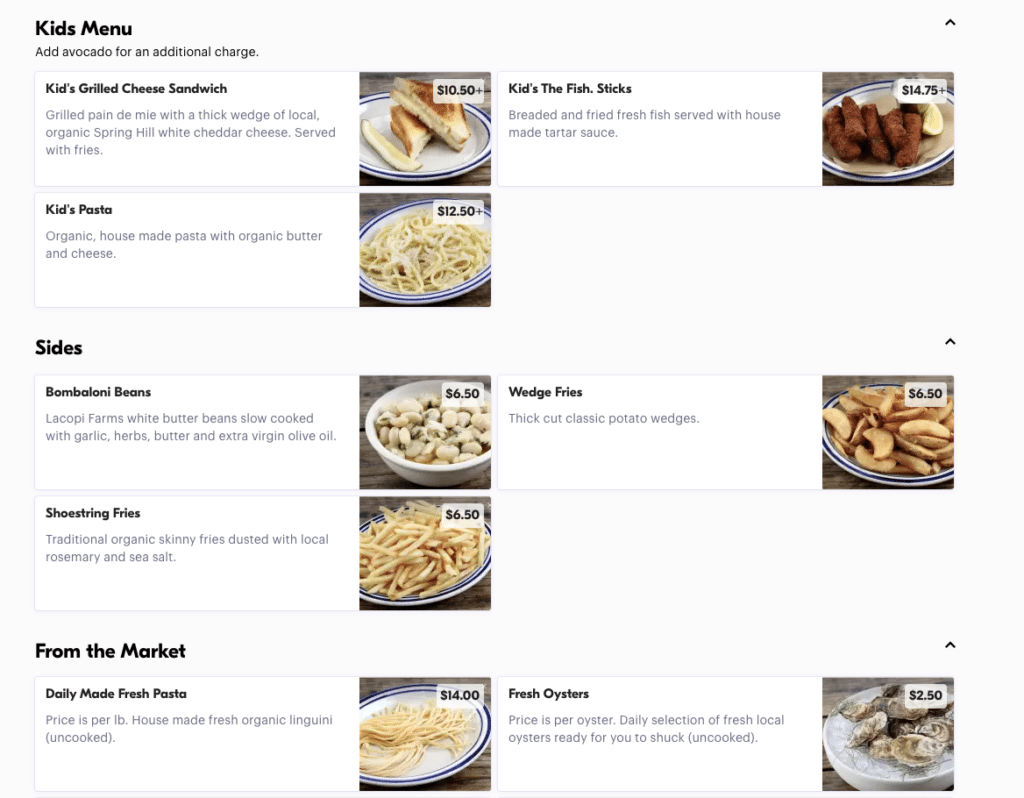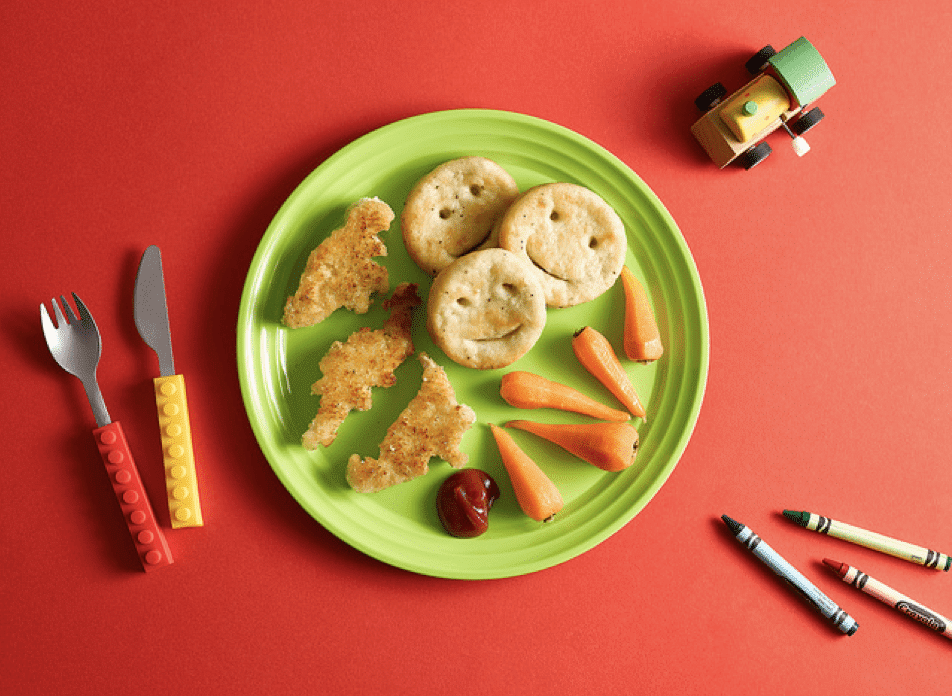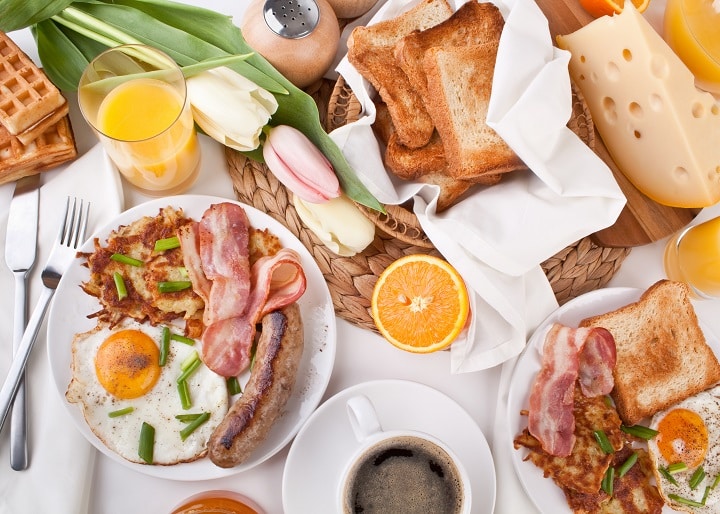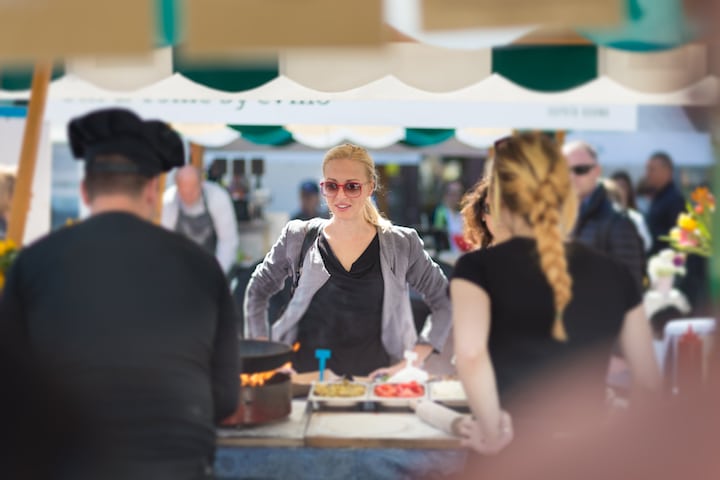Sign up for restaurant insights
Once upon a time, you were lucky if you had one solid option for food delivery: pizza. Over the last few decades, the number of restaurants offering takeout and delivery has steadily increased. During the pandemic, those statistics rose exponentially.
According to the National Restaurant Association, 68% of adults say they’re more likely to bring home delivery or takeout now versus before the pandemic. Even more exciting is the 53% of adults who say takeout and delivery are now essential to their way of life.
For restaurant owners and operators, these stats translate into endless opportunities. But to succeed at delivery and takeout you need a menu that’s optimized and full of dishes built to travel. Here’s how Grubhub experts suggest building a successful delivery menu made to raise revenue.
Choose your delivery menu items wisely
Your delivery menu should be an extension of your dine-in experience, but not identical. To make life easier on your staff and your customers, audit your menu to identify items that are delivery-friendly.
It also helps to refine your menu to include seven or fewer items in each category. That may mean paring down your salads or entrees to avoid giving customers decision fatigue — that’s when they have so many options, they get overwhelmed and either order less or decide not to order at all.
Keep in mind dishes that may continue to cook during delivery
Delivery timing can be quite challenging. While cold dishes can travel on ice packs and in insulated carriers, some hot dishes are at risk of cooking past their ideal point while they’re on their way to the customer.
Here are some popular dishes to look out for:
Steaks and burgers
Beef is often ordered to a specific temperature, like medium-rare. Once packed hot, steaks and burgers may continue cooking and arrive dried out and chewy.
Ceviche and sushi
Raw fish seems like a relatively easy dish to transport — just keep it cold, right? Not so fast. Ceviche and certain types of sushi are “cooked” by marinating them in citrus. If left in contact with the citric acid for too long, the fish’s proteins will break down past the point of palatability.
Fried foods
Fried food might not continue cooking, but it will steam when packed hot and sealed into tight containers.
Most of these challenges can be tempered by watching your timing. Beef should be picked up and delivered within an hour of cooking. Ceviche and sushi should always be made to order, or in high-volume situations, checked regularly and kept cool until pick-up. As for fried foods, vented containers can help prevent soggy breading.
Pack sauces, creams, and cheeses separately
Few things are less appetizing than wet sandwich bread or hot sour cream half-melted into now-flimsy nachos. When moisture and foods like bread and chips mix, you get a mess. That mess leads to plummeting customer satisfaction and a major issue for your business. Luckily, there’s an easy fix.
All sauces, creams, cheeses, and other wet ingredients should be packed in small plastic containers and sealed with plastic wrap to prevent spills. It’s easy enough for a customer to spoon guacamole on their fish tacos or add gravy to their diner fries. Even ketchup and mustard on a burger can be problematic — those extra condiment packets and vented containers for the potato tots may expand your packaging costs, but customer loyalty is worth the investment.
Offer customers the chance to create their own menu items — but only to a point
Customers love custom dining experiences, which is why build-your-own menu items have become so popular. But for restaurant owners, there’s a fine line between providing enough customization and undermining your own operation (and bottom line). Too many options not only leads to decision fatigue, but it also takes too much power away from the cooks who know what it takes to create a memorable menu item.
Food Service Directors stress the benefits of curation over customization. Rather than giving customers 50 pizza toppings to choose from, give them 15 plus several predetermined combinations that make it easy to choose. It’ll be far simpler to maintain inventory and keep up with tickets during a rush and guests won’t be buried under an avalanche of possibilities. You also won’t have to take responsibility for broccoli, pineapple, and Swiss cheese pie someone took it upon themselves to order and then hated (surprise surprise).
The same concept extends to pricing. Custom options can add up quickly for consumers, but you also don’t want to offer blanket pricing that could leave you out of pocket. One solution is to offer a base price and only charge for premium ingredients such as avocado or imported cheeses. Another option is to play with portions and sizes. For instance, you might charge the same for adding chicken or salmon to a Caesar salad, but the salmon portion maybe 30% less than the serving size of the chicken. Less confusion is a win for all involved.
Always include photos in your delivery menu
Pop quiz: What one change to your delivery menu design can get you 70% more online orders and increase your delivery and takeout sales by 65%? The answer: food photography. Adding photos to your menu isn’t as important in-house where guests can smell your food and watch dishes hit the tables around them. But when customers are on their couches at home thinking about giving you a try, it’s important to appeal to as many senses as possible.
The team at Fish in Sausalito, CA know how valuable pictures can be to a delivery menu. From a Fish Louie brimming with fresh seafood to a tempting tuna salad sandwich, Fish’s pictures bring their concept to life. As a result, orders and revenue are on the rise.

Not sure how to get started with menu photos? Grubhub for Restaurants supplies partners with a professional photographer when they sign up!
Now you can show guests what your pho bo or Greek nachos look like and increase the chances they’ll click that “order now” button.
Make sure you include mouthwatering menu descriptions
A whopping 86% of millennials decide to try a new restaurant based on food-related content they see on the internet. Some of the content is on Instagram — hello drool-worthy photos — but a lot of it comes down to the descriptions you include on your delivery menu.
Cayenne, a restaurant in Brooklyn specializing in Nashville hot chicken, has mastered the art of mouthwatering menu descriptions.


Cayenne’s menu puts the best practices for dish descriptions into good use.
- Use high-value words like “crunchy” and “creamy” to create a sensory experience
- Let guests know exactly what they’re getting right down to how a dessert is layered or whether the chicken is spicy
- Reference the origins or quality of an ingredient, such as if it’s organic or all-natural
- Describe how a dish is best eaten so guests get the best flavors possible
Find the right packaging for your delivery menu
Once you’ve created a stellar delivery menu, make sure it gets to customers in the right condition by picking out the perfect packaging. Choose containers that:
- Keep cold and hot elements separate during travel
- Isolate creams, sauces, dressings, and condiments to avoid getting bread and other crispy/crunchy items wet and soggy
- Vent hot items like French fries to prevent overcooking and/or steaming
- Are the right size so you can plate as properly as possible and minimize how much dishes get tossed around
Pairing the right delivery menu with the right delivery partner
You can spend all the time in the world building an incredible delivery menu, but none of it matters if you can’t trust the people carrying your meals to customers. Your delivery partner is an extension of your brand, which is why it’s important to work with a company like Grubhub, that is invested in your success.
When you join Grubhub for Restaurants, you’ll be assigned account support that will work with you to optimize your delivery menu for optimal results. From providing menu consulting services to arranging for a free professional menu shoot to helping you incorporate alcohol into your delivery menus (where allowed by law), Grubhub takes you through the steps necessary to make your delivery and takeout operations the best they can be.
But that’s not all! When you join Grubhub for Restaurants, your menu will be listed on Grubhub Marketplace where over 33 million hungry diners head every day to find their next meal. Finally, all your work gets the audience it deserves.
Ready to get started? Sign up today!






